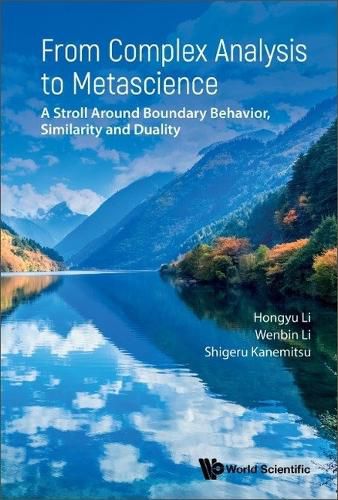Readings Newsletter
Become a Readings Member to make your shopping experience even easier.
Sign in or sign up for free!
You’re not far away from qualifying for FREE standard shipping within Australia
You’ve qualified for FREE standard shipping within Australia
The cart is loading…






This book covers complex analysis (the study of boundary behaviors of analytic functions) and its applications with engineering problems, especially control theory from the viewpoint of boundary functions. The metascience part is rather unique and illustrates a metascientific way of thinking engineering problems by examples of batteries which are cores of electric vehicles.This book gives a way of looking at the phenomena from a higher and brighter point of view through the windows of boundary behavior and metascience. In Chapter 1 which is meant for mathematics-oriented readers, we state materials in standard complex analysis with emphasis on similarity and Laurent expansions. Non-mathematical readers can also benefit by browsing through many examples and worked-out exercises. Chapter 2 gives some concrete examples of invoking novel ideas in the heap of stereo-typed contributions to a field. Possible replacement of LIB by ECaSS(R) is a typical example through which the reader can learn basics of electromagnetism and electrochemistry. The book also provides hints for a deeper understanding of environmental problems as well as how to manage and create a sustainable society.
$9.00 standard shipping within Australia
FREE standard shipping within Australia for orders over $100.00
Express & International shipping calculated at checkout
This book covers complex analysis (the study of boundary behaviors of analytic functions) and its applications with engineering problems, especially control theory from the viewpoint of boundary functions. The metascience part is rather unique and illustrates a metascientific way of thinking engineering problems by examples of batteries which are cores of electric vehicles.This book gives a way of looking at the phenomena from a higher and brighter point of view through the windows of boundary behavior and metascience. In Chapter 1 which is meant for mathematics-oriented readers, we state materials in standard complex analysis with emphasis on similarity and Laurent expansions. Non-mathematical readers can also benefit by browsing through many examples and worked-out exercises. Chapter 2 gives some concrete examples of invoking novel ideas in the heap of stereo-typed contributions to a field. Possible replacement of LIB by ECaSS(R) is a typical example through which the reader can learn basics of electromagnetism and electrochemistry. The book also provides hints for a deeper understanding of environmental problems as well as how to manage and create a sustainable society.